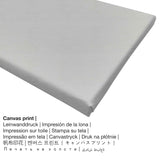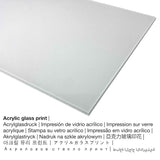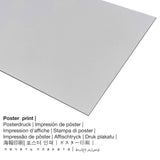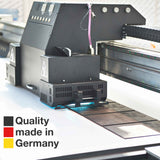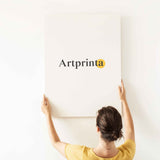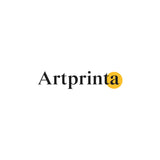Amaghi ama, 1129 - Ọgwụgwọ nke onye ìsì na nzụlite Lazarọs - ọmarịcha nka.
Ụtụ gụnyere. Mbupu gbakọrọ na ndenye ọpụpụ.
Ozi ndabere ngwaahịa
In 1129 the painter Unknown made this work of art The Healing of the Blind Man and the Raising of Lazarus. Ihe gafere 890 afọ mbụ tụrụ nha: N'ozuzu: 65 x 134 na (165,1 x 340,4 cm) na e mere ya na Usoro of fresco transferred to canvas. The work of art can be viewed in in the art collection of Museumlọ ihe ngosi nka nke Obodo. Site n'ikike nke: The Metropolitan Museum of Art, New York, Gift of The Clowes Fund Incorporated and E.B. Martindale, 1959 (ikike ngalaba ọha). Ihe kredit nke artpiece bụ nke a: Gift of The Clowes Fund Incorporated and E.B. Martindale, 1959. Ọzọkwa, nhazi nke mmepụta dijitalụ bụ odida obodo ma nwee oke akụkụ nke 2: 1, nke pụtara na ogologo ahụ dị okpukpu abụọ karịa obosara.
Nkọwa ihe osise dị ka e si na Ụlọ ihe ngosi nka nke Obodo ukwu (© - Ụlọ ihe ngosi nka nke obodo ukwu - Museumlọ ihe ngosi nka nke Obodo)
The church of San Baudelio in northern Castilla was originally decorated with a complete cycle of wall paintings depicting the life of Christ above a row illustrating hunting scenes and various exotic animals. The New Testament scenes can be ascribed to a master who worked on the paintings at Santa Maria de Taüll, in the province of Lleida (Lérida).
Data ndabere gbasara nka
| Aha nka nka: | "The Healing of the Blind Man and the Raising of Lazarus" |
| Nhazi nka: | sere |
| Otu sara mbara: | nka ochie |
| Century: | 12th narị afọ |
| Afọ okike: | 1129 |
| Afọ nka: | ihe dị ka afọ 890 |
| Ihe osise izizi: | fresco bufere na kwaaji |
| Akụkụ izizi (ọrụ nka): | N'ozuzu: 65 x 134 na (165,1 x 340,4 cm) |
| Ụlọ ihe ngosi nka / ebe: | Museumlọ ihe ngosi nka nke Obodo |
| Ebe ebe ngosi nka: | New York City, New York, Njikota Obodo Amerika |
| Dị n'okpuru: | Museumlọ ihe ngosi nka nke Obodo |
| Akwụkwọ ikike nka: | ngalaba ọha |
| Site n'aka: | The Metropolitan Museum of Art, New York, Gift of The Clowes Fund Incorporated and E.B. Martindale, 1959 |
| Ebe E Si Nweta: | Gift of The Clowes Fund Incorporated and E.B. Martindale, 1959 |
Banyere onye na-ese ihe
| Aha onye nka: | Unknown |
| Ọrụ onye na-ese ihe: | onye na-ese ihe |
| Nkewa onye nka: | nna ukwu ochie |
Ihe ndị ahịa anyị nwere ike isi na ya nweta
We offer a range of various materials and sizes for every product. Pick your favorite material and size between the following preferences:
- Mbipụta iko acrylic na-egbuke egbuke: An acrylic glass print, often described as a plexiglass print, transforms your favorite original work of art into home decoration. Further, it is a distinct alternative to dibond and canvas fine art replicas. The great upside of an acrylic glass fine art print is that contrasts and smaller painting details will be exposed thanks to the granular gradation in the picture. The acrylic glass protects your chosen art replica against light and external influences for between 40-60 years.
- Kwaaji: A printed canvas applied on a wood frame. A canvas print has the advantage of being relatively low in weight, which implies that it is easy and straightforward to hang up your Canvas print without the use of extra wall-mounts. A canvas print is suitable for any type of wall.
- Mbipụta nke aluminom: This is a metal print manufactured on alu dibond with an outstanding effect of depth - for a modern impression and a non-reflective surface structure. A direct Direct Print on Aluminum Dibond is your perfect introduction to the sophisticated world of fine art reproductions on aluminum. The bright parts of the artpiece shine with a silk gloss, however without glare.
- Mpempe akwụkwọ ederede (akwa akwa akwa): The Artprinta poster is a printed canvas with a slightly roughened surface texture, that resembles the original version of the work of art. Please bear in mind, that depending on the size of the poster we add a white margin between 2-6cm round about the print motif in order to facilitate the framing with your custom frame.
Ozi ngwaahịa ahaziri
| Nkewa edemede: | nka nka |
| Mmeputakwa: | dijitalụ mmeputakwa |
| Usoro mmepụta: | Mbipụta UV ozugbo |
| Mmalite nke ngwaahịa a: | emepụtara na Germany |
| Ụdị ngwaahịa: | a na-achọ |
| A na-atụ aro iji ngwaahịa eme ihe: | mgbidi gallery, nka mgbidi |
| Nhazi: | nhazi odida obodo |
| Oke akụkụ: | 2: 1 |
| Akụkụ onyonyo pụtara: | ogologo ahụ dị okpukpu abụọ karịa obosara |
| Ụdị akwa: | akwụkwọ mmado (akwụkwọ kwaaji), mbipụta ọla (aluminium dibond), mbipụta iko acrylic (nke nwere ezigbo mkpuchi iko), mbipụta akwụkwọ. |
| Nhọrọ nha nha mbipụta kanvas (akwa akwa na etiti ihe ndọtị): | 40x20cm - 16x8 ", 60x30cm - 24x12", 80x40cm - 31x16", 100x50cm - 39x20", 120x60cm - 47x24", 160x80cm - 63x31", 180-x90cm |
| Mbipụta iko acrylic (nwere ezigbo mkpuchi iko) dị iche iche: | 40x20cm - 16x8 ", 60x30cm - 24x12", 80x40cm - 31x16", 100x50cm - 39x20", 120x60cm - 47x24", 160x80cm - 63x31", 180-x90cm |
| Mpempe akwụkwọ mmado (akwụkwọ kwaaji) nha: | 60x30cm - 24x12", 80x40cm - 31x16", 100x50cm - 39x20", 120x60cm - 47x24" |
| Nhọrọ Dibond (ihe alumnium) nhọrọ: | 40x20cm - 16x8", 60x30cm - 24x12", 80x40cm - 31x16", 100x50cm - 39x20", 120x60cm - 47x24" |
| ụba: | enweghị etiti |
Ederede iwu: We do what we can to describe the products as closely as it is possible and to demonstrate them visually in our shop. Although, some pigments of the printed materials and the printing might vary to a certain extent from the representation on your screen. Depending on your settings of your screen and the nature of the surface, colors might not be printed as realisitcally as the digital version depicted here. Considering that our are processed and printed by hand, there may also be minor differences in the motif's size and exact position.
© Nwebiisinka nke | Artprinta.com (Artprinta)


